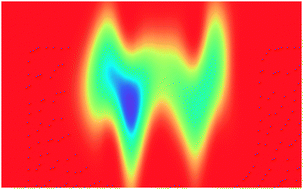Optimal control theory – closing the gap between theory and experiment
Abstract
Optimal control theory and optimal control experiments are state-of-the-art tools to control quantum systems. Both methods have been demonstrated successfully for numerous applications in molecular physics, chemistry and biology. Modulated light pulses could be realized, driving these various control processes. Next to the control efficiency, a key issue is the understanding of the control mechanism. An obvious way is to seek support from theory. However, the underlying search strategies in theory and experiment towards the optimal laser field differ. While the optimal control theory operates in the time domain, optimal control experiments optimize the laser fields in the frequency domain. This also implies that both search procedures experience a different bias and follow different pathways on the search landscape. In this perspective we review our recent developments in optimal control theory and their applications. Especially, we focus on approaches, which close the gap between theory and experiment. To this extent we followed two ways. One uses sophisticated optimization algorithms, which enhance the capabilities of optimal control experiments. The other is to extend and modify the optimal control theory formalism in order to mimic the experimental conditions.


 Please wait while we load your content...
Please wait while we load your content...